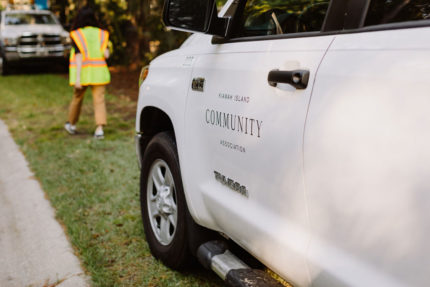Feb
13
2007
From The Blog
Conservation Matters Kick-Off Presentation
On December 6, nearly 50 people attended the first in a series of “Conservation Matters” presentations by the Kiawah Island Natural Habitat Conservancy (conservancy). The series will provide information on significant aspects of land and habitat preservation on Kiawah Island. The conservancy has scheduled five more of these events on the first Wednesday of each coming month at the Sandcastle at 1:00 p.m.
The kick-off presentation featured Shane Roberts, University of Georgia doctoral candidate in biology and former Kiawah Island researcher, speaking about Kiawah bobcats. His talk was accompanied by a visual presentation that facilitated the audience’s understanding of this exciting topic. Shane’s talk was largely based on the results of the bobcat predation and ecology study that he performed on Kiawah. Key points included the following:
• Sixty percent of all deer fawns born on Kiawah are killed by bobcats. This is the reason that Kiawah does not have an overabundant or problem deer population.
• Bobcats are territorial predators. In general, a bobcat’s home range depends on the resources available in an area. Not surprisingly, the home range for bobcats that live on Kiawah’s west end (which is more highly developed) is nearly twice the size of the home range for bobcats living on the east end of the island.
• Bobcat reproduction was studied. Twelve kittens were found during 2004 and 2005 in seven dens. Shane said this indicated the habitat on Kiawah, at present, is presently adequate to keep our bobcat population stable. Also, the genetic composition of our bobcats is healthy.
Shane emphasized that Kiawah’s bobcats are an important “umbrella” species for our island, which means that if they remain healthy and stable in number, we can predict that most other species on Kiawah will be healthy and stable as well. To successfully maintain the bobcat population, we need to maintain:
• Adequate habitat for both bobcats and their prey (deer, rodents, rabbits, birds, etc.)
• Adequate habitat for bobcat reproduction, i.e., places where they can create dens. Continued development of Kiawah Island will impact our bobcat population. What can members interested in conservation do? Members can work with the conservancy to maintain optimal bobcat habitat on the island. Optimal habitat includes areas covered by native grasses, forbs and shrubs. Shrubs include wax myrtle, yaupon holly, honeysuckle, and greenbrier. Members need to preserve dune grasses, plus marsh and pond edges. In backyards, whenever possible members can maintain and create soft edge habitats, which include:
• A transition zone between the low marsh and upland vegetation;
• Dune vegetation between homes and the beach;
• Buffer strips along roads, paths, and between homes, with intact understory (shrubs, forbs, and grasses); and
• Natural shrub, forb and grass vegetation along pond edges.
Hard edges are often created by residential construction where the open clearing for the home meets the mature maritime forest. Native plantings along this edge that mimic natural soft edges (grasses, forbs, and shrubs that provide a vertical transition) can soften the edge and increase its value for wildlife. If a member’s lot contains any of these natural soft edge habitats, the best thing he or she can do for wildlife is leave it as natural as possible. These areas are very important for bobcat feeding, resting, and travel. Also, the soft edge habitats provide countless benefits to a variety of other wildlife species.
Shane mentioned that a new round of research using GPS collars and satellite tracking is being conducted by the conservancy and the Town of Kiawah Island. This new research will develop important additional findings about where bobcats spend their time, and consequently the location and amount of land required to support their continued existence on Kiawah Island as development is completed.

